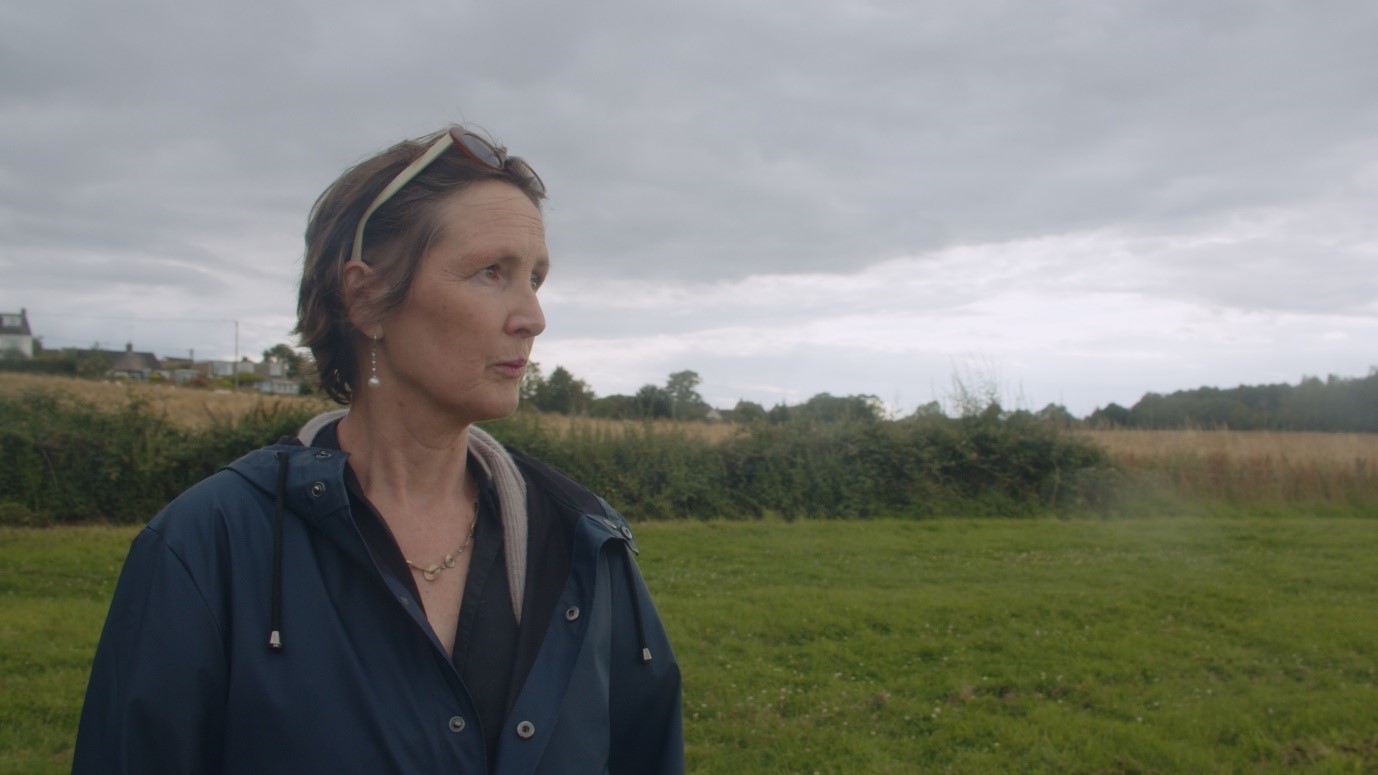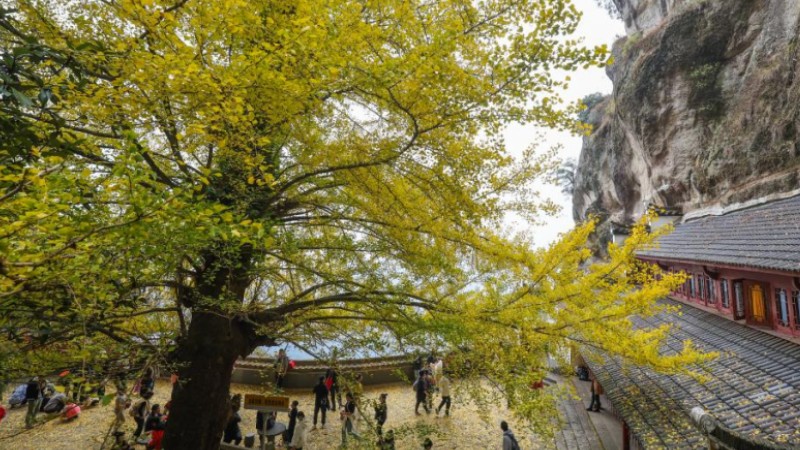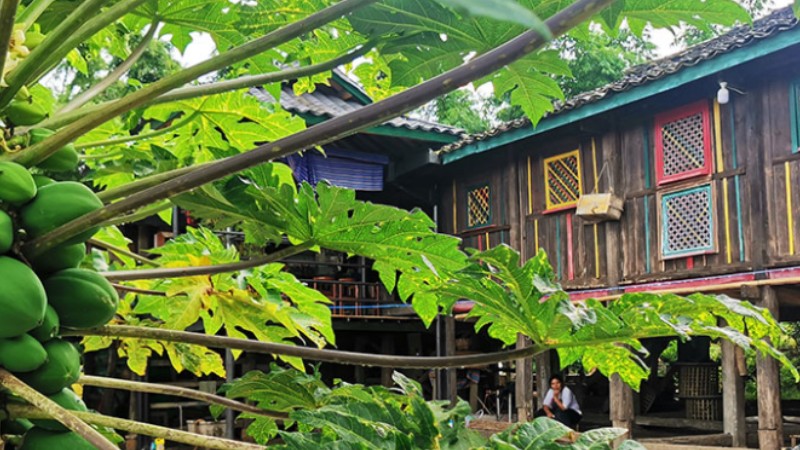Katie Hill: Bridging East and West through Chinese contemporary art
Now residing in a quiet village in West Oxfordshire, Dr. Katie Hill is the Academic Lead – Asia at the prestigious Sotheby's Institute of Art. She still travels frequently around the world – her most recent trip involved taking a group of students to Frieze Seoul and introducing them to the vibrant contemporary art scene in this emerging Asian hotspot. However, she once considered China her home.
Originally from the United Kingdom, Katie Hill embarked on a journey to Xi'an in the 1980s as an exchange student from the University of Edinburgh, where she studied Chinese culture and language. Over the years, her deep connection with the Chinese art scene developed naturally. She was nurtured by her extensive travels and the meaningful relationships she established with Chinese artists who had settled in Europe. In both her professional and personal life, Hill remains dedicated to exploring and interpreting Chinese culture for Western audiences, fostering cross-cultural exchange between Asian artists and their Western counterparts.
During her interview with People's Daily Online, Hill elaborated on her approach to navigating the realm of contemporary Chinese art. She reflected on her past projects, discussed migration in a swiftly evolving global landscape, and shared valuable insights from her involvement with this distinctive subject matter.
Journey to the East: Discovering Chinese contemporary art

Katie Hill (Photo/Fraser Watson)
People's Daily Online: Your initial journey to China occurred in the 1980s when you ventured to Xi'an to immerse yourself in Chinese language studies. We're curious about what sparked your fascination with Chinese culture and what influenced your decision to embark on this linguistic and cultural journey. Could you share the experiences or influences that led to your choice?
Katie Hill: I have always been a language person. I had studied languages at school: French, German, and Italian. I became interested in the Chinese language because of the script and its visual elements. I decided to do a degree in Chinese at Edinburgh as I really wanted to decode it.
As visiting students, we were in China from 1986 to 1987 for one year at Xibei Daxue in Xi'an, which was a life-changing experience. Xi'an was quite rural at the time; I would say it was underdeveloped in the sense that there were not many high-rise buildings. It was quite dusty, it was quite grey, but ethnically, it was interesting because there was a Muslim district in Old Xi'an with a mosque, and there were the Hui people and the Uygurs. So, it had quite a mix of people coming from the West. However, I found the local people quite difficult to understand because they had strong Shaanxi accents. Having just started learning Chinese, it was difficult for us to converse very easily. Therefore, for us, it was about seeing the city itself with our own eyes, seeing people in their daily activities, and experiencing street culture, trying out street food. We had even seen donkeys and camels on the streets. It was quite exotic in that way, and in history, Xi’an was the gateway to the West.
People's Daily Online: Since your initial exposure to China during your time in Xi’an, you’ve maintained a strong connection with the country. As you’ve continued engaging with China and its people over the years, it would be interesting to hear how your perceptions of the country and its inhabitants have evolved. Could you share some insights into these changes?
Katie Hill: I witnessed the changes in the nineties when the cities were being rebuilt, particularly Beijing. It was very much dug up and reconstructed. It's almost unbelievable that every time you go back, there are always big changes. Beijing is so enormous now with all these new railroads and huge housing developments around the edges.
In fact, we lived in China from 2007 to 2008 near the 798 Art Zone in Dashanzi, Beijing. It was just before the Olympics, and there was loads going on. By then, some of the artists had moved out because the rents had gone up, but some very successful artists were still around that area. We visited Liu Xiaodong (刘小东) and Yu Hong (喻红), as well as people like Huang Rui (黄锐), who have been there all along and who founded that area. It is amazing to think that this period and this area have defined the infrastructure of the contemporary art world in China.
Moving bodies: Introducing Chinese artists to new audiences

Katie Hill (Photo/Fraser Watson)
People's Daily Online: Your deep-rooted connections within the realm of Chinese contemporary art are evident, and you've been an active participant in this scene. What was your initial encounter with the world of Chinese contemporary art like?
Katie Hill: I graduated in 1989, and I was lucky enough to get a job at the National Art Library right afterward in London to catalog Chinese art books. Then, I went traveling a lot, and worked in Hong Kong and Taiwan before I ended up in Rome. From there, I started meeting artists from China who had moved to Europe, and that's what led to my study at SOAS and Ph.D. with Craig Clunas at Sussex University, who had just left the Victoria and Albert Museum and became an academic at that point. I realized there was a new wave of artists who left China, and they were coming to live in Italy, France, Germany, Britain, the U.S., and Australia. This was interesting because it raised all sorts of questions about what they were doing, how they were going to practice, who they were interacting with in the art world, and how they were going to be represented. All those questions came into my thesis, and it became almost an ethnographic study of this very contemporary situation.
People's Daily Online: Your involvement with Chinese contemporary art has unfolded organically, intertwined with your personal journey. Your significant contributions have focused on highlighting the diasporic presence of Chinese artists in Europe and enhancing their visibility within Western institutions. Could you discuss some notable initiatives and collaborations you've participated in and how they have helped foster a deeper understanding and appreciation of Chinese artists in Western contexts?
Katie Hill: I did a lot of research and interviews with artists. For example, my conversation with Huang Yongping (黄永砯) became a chapter in my thesis, as his work needed a lot of understanding because it's quite intellectual and conceptual. He was talking about Chinese tradition but mixed with contemporary and philosophical concepts.
Then, I met Cai Yuan (蔡元) in London. I started working with him quite a lot on his own work, curating their performances, developing exhibitions with them, and doing some group exhibitions.
People's Daily Online: You are almost like an interpreter, translating culture to people with different backgrounds. Have you ever tried to, for example, parallel Chinese artists with local artists from England?
Katie Hill: Yes, I did. I curated a big show in Beijing at the Tang Contemporary gallery in 2009, and that was called "English Lounge." I was playing with the idea of what is “English,” and I wanted to open it up as a question and make the exhibition a space for crossing cultures. The lounge idea was from an airport lounge or somewhere that you can hang out together, and it was about global migration and travel. We brought the artists Langlands & Bell to Beijing, and they did a huge site-specific wall painting of airport codes. The idea was to incorporate some Chinese artists who were based in Britain, including one called Anthony Qi, who is ethnically Chinese but grew up in South Africa, and works very closely with materials around Chinese culture and food. We also included a work by Martin Creed called “Don't Worry,” and we had to work with local fabricators in Beijing to reproduce the work, which added another layer to the work.
Crossing borders: Chinese contemporary art as transnational art

Katie Hill and students (Photo/ Katie Hill)
People's Daily Online: It's interesting to note that early in your career, your focus was primarily on collaborating with Chinese artists from the diaspora in Europe, but later, you embarked on projects within China itself. Has your research interest consistently revolved around this transition in a geographical context and the concept of "positioning?"
Katie Hill: My original research, which underlies everything I do, was about examining globalization, but also transnationalism and the complex idea of migration and identity through people like Homi K. Bhabha and Stuart Hall. Expanding that research and bringing it to real life allowed me to have a nuanced understanding of positioning, which is incredibly important.
People's Daily Online: What insights have you gained from working with artists? Considering that every artist has their own reference points, how do you expand your knowledge base?
Katie Hill: When working with artists, you must keep the relationship real and fresh. It's always an experience during which you're open to the other person. You can't dictate anything.
My current teaching practice is at Sotheby's Institute, and I look after the Asia activity. For example, we were running a course on art collecting in Seoul during Frieze this September. The program includes modules in Indian art, Japanese art, Korean art, Southeast Asian art, and so on. So, I had to expand into other people's areas of specialization, which makes me feel more ready now to play a bigger role in Britain with Chinese artists, whether they're here or elsewhere. There is still a lack of space for engagement. From the point of interpreting the cultural nuance, the idea that you can have a proper dialogue that's not one-sided is equally important.
People's Daily Online: Could you share with us your current projects or recent focuses?
Katie Hill: I have been doing more work with ink painters in the more recent period. For example, I did an exhibition with Wang Huangsheng (王璜生) in Hong Kong a few years ago. When you are working with people who are scholars, museum directors, and artists, you need that longer history to understand what they do. They have a huge amount of knowledge and often use old, philosophical texts like “Tao Te Ching” to inform their work or incorporate them into their work as a contemporary philosophical engagement with the cosmos and the spirit.
In terms of projects, I am trying to revive my company, which is called Office of Contemporary Chinese Art, and that is designed as an agency incorporating curatorial consultancy for museums or collections. I'm working on a private collection now, developing a catalog for an ink painting collection in Europe. Apart from that, I want to incorporate some more courses on Chinese and Asian art because it's still an area that I think is lacking in the West.
People's Daily Online: From your perspective, what is the relationship between the contemporary art scene in China and the rest of the world?
Katie Hill: I'm particularly intrigued by the intersection of the Global South and China, and my vision involves facilitating collaboration between artists from these distinct regions. Over the past few years, I have had the opportunity to visit Thailand and Korea, where I observed the presence of influential Korean galleries in Beijing. Simultaneously, I've noticed that Beijing-based galleries are expanding their reach by establishing spaces in Bangkok and Seoul. These interconnected relationships can be traced back to shared cultural elements like porcelain and calligraphy, as well as overarching philosophical threads that traverse Asia, even though they may have evolved through diverse historical journeys.
I'm also very interested in Africa and China, not just because of the many collaborations between these two places but also because, following the recent debate about Black Lives Matter, I think there is a need to bring that conversation into the space of Chinese artists and get them to respond to it.
People's Daily Online: What is unique about working with Chinese materials?
Katie Hill: Chinese culture is huge. I am always having to stretch my knowledge in order to incorporate these complexities, and you could never, ever run out of interest in it because it's a huge resource of knowledge and creativity.
Photos
Related Stories
- Dunhuang culture exhibition held in N China
- Art form widens its reach, sends cultural message
- Xiaohe Township in C China makes great efforts to promote local artists
- New venue of Shenzhen Art Museum opens
- Over 2,000-year-old workplace of artisan workers found in east China
- Trending in China | Regong arts: An artistic integration of history, culture and religion
Copyright © 2023 People's Daily Online. All Rights Reserved.









